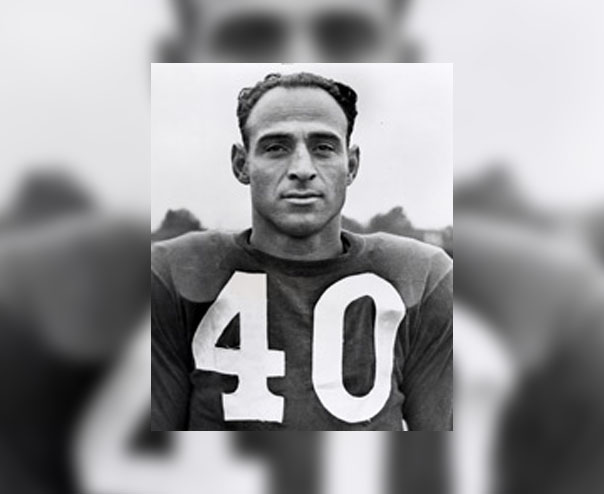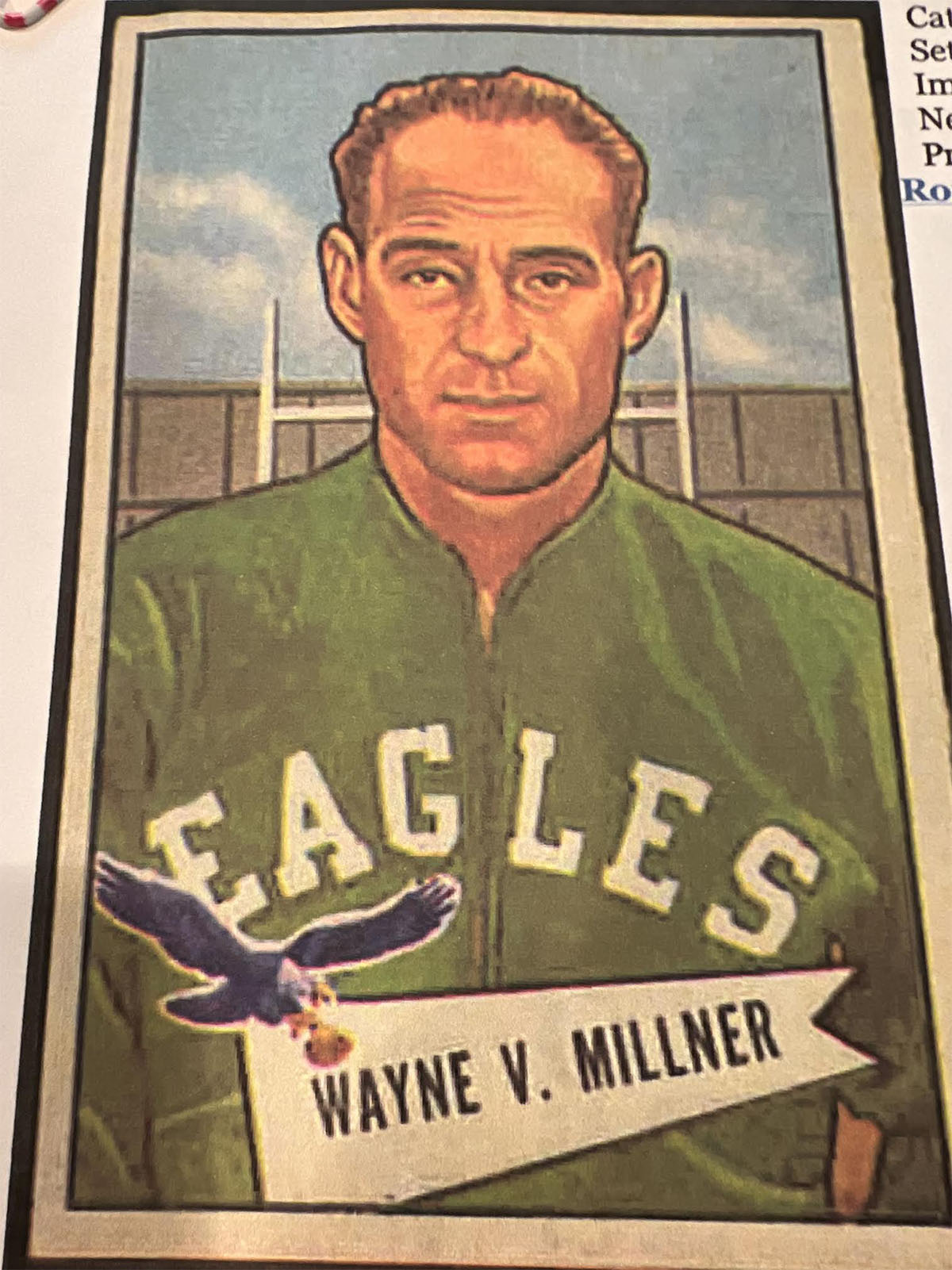


Carey's Corner
FROM THE MALVERN ARCHIVES
A LOOK BACK
May 4th, 2023
This one needs some set up. The more I dig into MP football the more interesting and potential stories I find. As my luck would have it, I was talking to a classmate of mine, Jack Tomarchio, about my hobby of writing about and recording Malvern football history on the football website. I can take absolutely no credit for the body of the story I am about to tell. I added some information here and there to fill it out but a bulk of this is from Jack. I had no idea who Wayne Millner was before Jack and I started talking. Jack, like me, is a bit of a history buff. He had written a story about some MP alums who had some pretty illustrious careers after their time at Malvern. He wondered why they were not recognized on the Wall of Fame. The title of his article was “Off the Wall”, Malvern’s best athletes who never made the wall. Before you ask, part of the Wall criteria is that an athlete has to attend Malvern for at least two years.
It takes a lot for me to be amazed and impressed but the story about Wayne takes it to another level of amazing and impressive. You can file this one under a giant banner of “you really cannot make this stuff up”. Many kudos to Jack Tomarchio for his help in putting this story together.
So here goes…..
Wayne graduated from Salem High School in Massachusetts, where he held many school records. Wayne earned All-State honors in football in each of his four years of play (not a bad record). He came to Malvern in September 1930 as a post grad. He played on both the football and basketball teams. Wayne starred as a starting full back for the Friars, who went 5-1-1 that season.

This is where his story gets even more interesting and can be filed under, “you really cannot make this up”.
After graduation Wayne went to the University of Notre Dame where he was recruited by the great head coach Knute Rockne. Yes, THAT Knute Rockne. Playing both ways at end for Notre Dame, Wayne became an All American. He is in the annals of Notre Dame football history as a result of his play in two famous Irish victories. In 1933 Notre Dame was still reeling from Rockne’s death in a plane crash and was having a miserable season. Only two of their first eight games produced a win. Notre Dame faced unbeaten Army in week nine. With only one minute to play, the cadets were forced to punt. Wayne blocked the punt and ran it in for a touchdown. Notre Dame went onto to win 13-12.
In 1935 Notre Dame was enjoying an unbeaten season and was preparing to meet the unbeaten Ohio State Buckeyes in a game that went on to be voted one of the best college football games in the first part of the 20th century. Before a jammed packed 80,000 spectators in Ohio State’s stadium Notre Dame fell behind the Buckeyes 13-0. With 8 minutes to go the Irish offense finally got going and responded by registering two touchdowns. Unfortunately, Notre Dame missed both extra points and still trailed the Buckeyes 13-12. The last and decisive drive of the game started at the Notre Dame 30. It was none other than Wayne Millner who caused a turnover by creating a fumble. However, it wasn’t the fumble that he is famous for. The stage was now set for what some believe is the most dramatic football finish in history. With two seconds left on the clock, off a reverse, QB Bill Shakespeare lofted a 30 yard desperation pass into the endzone. Wayne Millner jumped high into the air and wrestled the ball away from the Ohio State defender for the final TD. Score Notre Dame 18 Ohio State Buckeyes 13. On the year Notre Dame finished 7-1-1 and was ranked 9th in the country. Ohio State only blemish was the ND loss. They finished 7th at 7-1. Notre Dame’s tie came 3 weeks after the Ohio State game. The hero for Notre Dame? Of course, it was Wayne Millner again. He caught a TD pass with 4 minutes to go to even the score against Army at 7-7.
At 6’1 and 189 lbs. Wayne was drafted in the eighth round of the 1936 NFL draft to the Boston Redskins. In 1937 the franchise moved to Washington and defeated the George Halas coached Chicago Bears 28-12 in the title game. Wayne played a major role in the game by catching a 55 and 78 yard TD pass from none other than the legendary, Sammy Baugh. For the championship, Sammy Baugh was 18-33 for 335 yards and 3 TDs. Wayne had 9 of the 18 completions and 160 of the 335 yards. In addition to his great speed as a receiver, Millner also played defensive end. He was considered one of the best “two way ends” of his time. He was also the first Washington Redskin to record 100 yards receiving in a game.

With the start of World War II Wayne, as many athletes did at the time, entered the military. After his three year naval enlistment was over he returned to the Washington Redskins. In his seven year career over 76 games, Wayne caught 124 passes for 1,578 yards, a 12.7 yard average, and 12 touchdowns. I know many of you are thinking that those career statistics would be a season total by today’s pass happy standards but you have to remember he also played defensive end. A true two way “Chuck Bednarik” kind of player.
He switched to the All-America Football Conference in 1949 where he was an assistant coach with the Chicago Hornets for a year. In 1950 Wayne became an assistant coach with the Baltimore Colts.
Wayne returned to Philadelphia in 1951 to become an assistant under Bo McMillan. When McMillan was diagnosed with stomach cancer, Wayne was elevated to the head coaching position for the Eagles. It was a job he held for just one year before resigning at the start of the 1952 season. Seventeen days after his resignation, Wayne accepted a position as an assistant coach for his old team, the Washington Redskins. He remained with the ‘Skins until 1957 when he accepted a position at Hardin-Simmons. In 1963, he again rejoined the Washington Redskins as a scout but this job was short lived as he suffered a heart attack.
In 1968 he was inducted into the Pro Football Hall of Fame. Wayne was inducted into the Hall with some names that might sound familiar even if you are a casual football fan- Art Donovan, Marion Motley, Charley Trippi and Elroy “Crazy Legs” Hirsch. That is some famous, football company.
Wayne had one last coaching stint but it was cut short by a second, fatal heart attack. He died November 19, 1976 at the age of 63.
When I can write a story and reference Knute Rockne, College All- American at Notre Dame, George Halas, Sammy Baugh, Marion Motley, Crazy Legs Hirsch, NFL Champion, Eagles Head Coach and the NFL Hall of Fame and have it connected to Malvern, then I know I have had the opportunity to write a very unique story.
There you have it. You just can’t make this up. And I am not quite done. Jack wrote about some additional alum in his article. They will be featured in an upcoming Careys Corner.
More to come……………
05.04.23